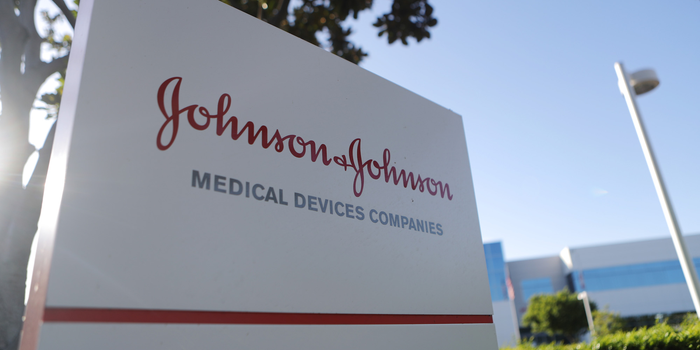
What does J&J's split mean for the medical device business?
2021/11/18 17:46:47 Views£ļ1307
Original from: Medtech Dive
Image Credit: Mario Tama/Getty Images
Wall Street analysts contend that Johnson & Johnson's recent decision to split off the consumer health unit as its own company is likely to boost growth and increase operating margins for the remaining pharmaceutical and medical device segments.
The healthcare giant's lower-growth consumer health brands are a drag on the pharmaceutical and device groups, according to SVB Leerink analysts. Consumer health has end-market growth of around 3% to 4%, while pharma and medical devices both grow around 5%.
The analysts added that separating the consumer group may also help grow margins as the unit dilutes overall operating margins, with consumer health "in the teens range vs. Pharma and Medical Devices which deliver peak margins in the high-20s and low-30s."
Stifel analysts agreed, writing in a Friday report that it "seems clear that absent the lower-growth consumer business, the new JNJ should show consistently higher top-line growth."
J&J announced Friday that the company is splitting in two, with the pharma and device units remaining under the J&J brand and the consumer health brands becoming an independent company. J&J expects the move to take place in 18 months to 24 months, and costs are projected at a range of $500 million to $1 billion.
The company estimated the combined revenue of the medical devices and pharmaceutical units at about $77 billion for 2021, with pharma making up 65% of the total and devices making up the remaining 15%. The medical device side is made up of orthopaedics company DePuy Synthes, surgical tools maker Ethicon and Johnson & Johnson Vision, among others.
The medical device business has brought in $20.2 billion in sales through the first three quarters of 2021, representing growth of 23.4% over the same period in the pandemic-hit 2020. In 2019, the unit brought in $19.3 billion over the first nine months of the year.
Meanwhile, the pharmaceutical business has brought in $37.8 billion in sales through the third quarter, year-over-year growth of 13.5%.
A breakdown of J&J's medical device business through Q3
| Sales(M) | YOY growth | |
|---|---|---|
| Interventional Solutions | $2,952 | 37.1% |
| Orthopaedics | $6,433 | 15.4% |
| Surgery | $7,299 | 25.8% |
| Vision | $3,517 | 23.7% |
SOURCE: Johnson & Johnson
Joaquin Duato, who will take over J&J when current CEO Alex Gorsky steps down in early 2022, said during Friday's call with analysts and investors that the move will allow the pharmaceutical and medical device segments to be more focused on specific markets and help drive above-market growth.
"We expect to achieve superior performance in all segments with a goal of delivery at or above the market in the categories that we compete in," said Duato, who currently heads the company's executive committee.
Moody's analysts wrote that while J&J's size and diversity of products has boosted its rating in the past, the "consumer products business is becoming less synergistic with J&J as a whole due to fewer opportunities to apply scientific innovation and changing consumer preferences."
Investors have seemed uninspired by the news as J&J's stock has remained relatively flat since the announcement.
Throughout Friday's call, executives continually said a benefit of the split will be the ability of the pharmaceutical and medical device groups to work and innovate together in the same treatment categories.
Duato pointed to lung cancer treatments, where the medical device business can combine its Monarch surgical robotic system for bronchoscopy diagnostics and the company's oncology therapeutics.
However, Wells Fargo analyst Larry Biegelsen pushed back on the idea of collaboration, saying that "we really haven't seen a lot of successful examples of synergies between the two segments." Biegelsen asked why J&J did not just divide into three separate businesses.
Gorsky did mention lung cancer as an area the units can work together, but the CEO spent more time breaking down the similarities in the operations rather than specific areas the segments will collaborate, such as similar regulatory pathways, distributions channels, investment in clinical development and overlap in sales, marketing and contracting.
"These two businesses share many more common themes versus our consumer business, and we think that it makes strategic sense for these two businesses to continue to work together," Gorsky said.
J&J's split follows two other key divisions in the medtech space. GE announced last Tuesday the company will divide into three, with GE Healthcare becoming a separate company in early 2023, and Zimmer Biomet announced in February that the company is spinning off its dental and spine units into an independent company.
Similar to J&J and GE, Zimmer CEO Bryan Hanson said at the time of the announcement that the split allows the orthopaedics company to focus more on specific markets, which will be the hip and knee spaces. Zimmer's spinoff is expected to be final by mid-2022.

- CAIVD WeChat
Subscription Account

- CAIVD WeChat
Channels
China Association of In-vitro Diagnostics
Part of the information in our website is from the internet.
If by any chance it violates your rights, please contact us.

